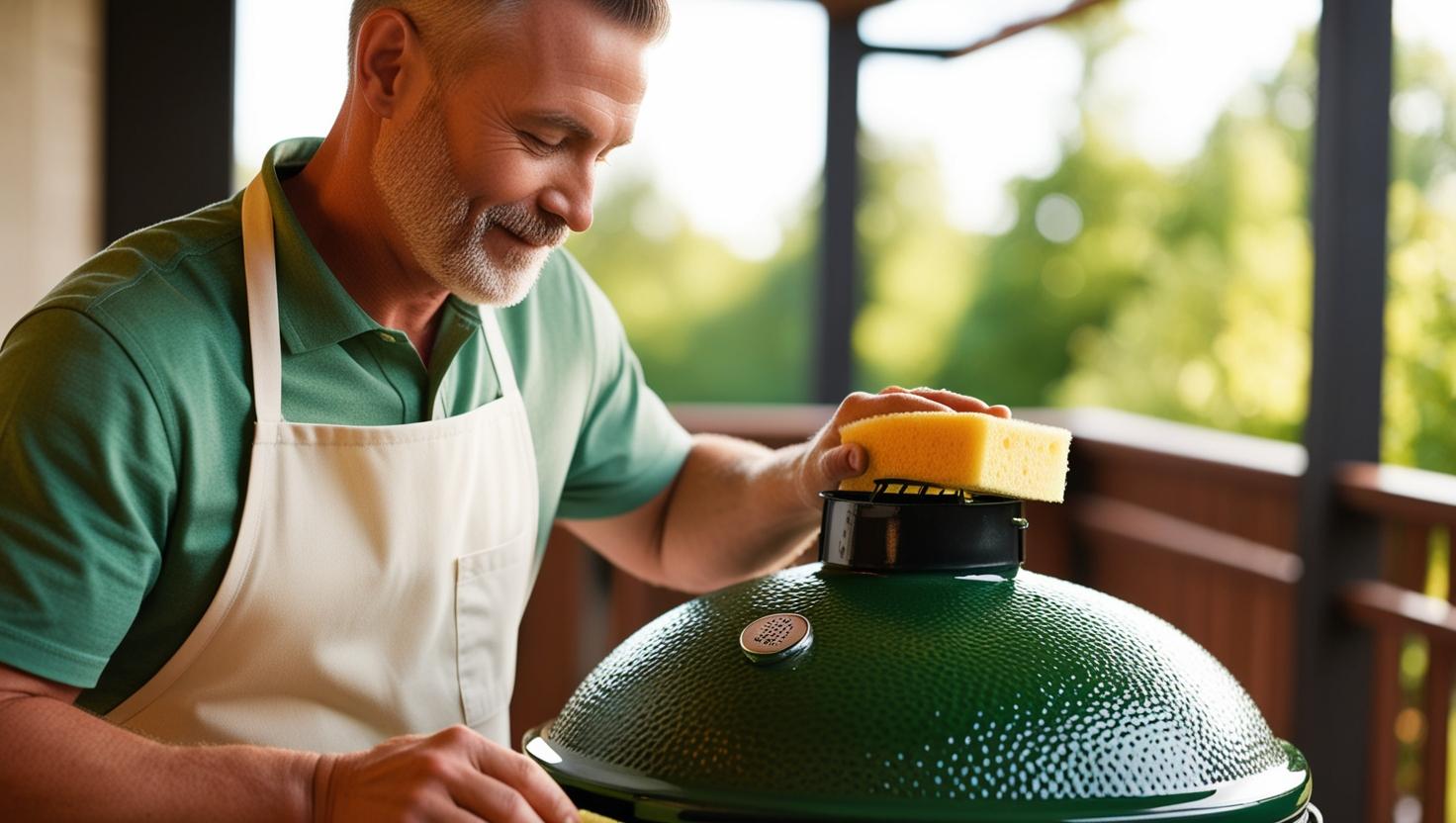The Big Green Egg is a grilling icon, prized for its versatility, heat retention, and durability. As a ceramic kamado-style cooker, it requires unique cleaning and maintenance methods to ensure peak performance and longevity. Cleaning your Big Green Egg isn’t just about aesthetics; it’s also about preserving the quality of your cooking experience and protecting the delicate ceramic components.
In this guide, we’ll walk you through the safe and effective way to clean your Big Green Egg, explain the nature of its ceramic components, and highlight products to avoid.
Understanding Your Big Green Egg’s Ceramic Components
The Big Green Egg is made of high-quality, heat-resistant ceramics. These ceramics are porous, allowing the Egg to retain heat efficiently while delivering consistent cooking temperatures. However, their porous nature means they can absorb chemicals and harsh cleaning agents, potentially impacting the flavor of your food or damaging the surface.
Key Considerations for Cleaning Ceramic Components:
- Avoid using chemical cleaners or harsh abrasives, as they can seep into the ceramic and release harmful fumes during cooking.
- Excessive moisture can lead to cracking or weakened structural integrity over time.
When Should You Clean Your Big Green Egg?
- Routine Maintenance: Light cleaning after each cook (e.g., removing ash and wiping surfaces).
- Deep Cleaning: Every few months or after heavy use, especially if grease or residue builds up.
Step-by-Step Guide to Cleaning Your Big Green Egg
1. Cleaning the Ash and Charcoal
Why It’s Important: Excess ash can restrict airflow, making it difficult to control the Egg’s temperature.
- Cool Down the Egg: Always ensure the Big Green Egg is completely cool before cleaning.
- Remove Ash: Use an ash tool or scraper to scoop out ash from the bottom vent into a container.
- Inspect the Charcoal: Remove unburned charcoal pieces and set them aside for reuse. Discard small or completely burned-out pieces.
2. Cleaning the Cooking Grates
Why It’s Important: Residual grease and food particles can create smoke that affects the flavor of your food.
- Preheat for Self-Cleaning: Heat the Egg to about 600°F for 10–15 minutes. This burns off food residue on the grates.
- Scrub the Grates: Once cooled, use a grill brush made of stainless steel or brass. Avoid brushes with loose bristles that can break off and stick to the grates.
- Wipe Clean: Use a damp cloth to wipe away any remaining debris.
3. Deep Cleaning the Interior
Why It’s Important: Grease and soot can accumulate on the inner ceramic surfaces over time, leading to unpleasant odors and reduced performance.
- Empty the Egg: Remove the cooking grates, fire ring, and firebox.
- Clean the Firebox and Fire Ring: Use a soft-bristled brush or damp cloth to remove soot and ash. Do not use water or chemicals, as the porous ceramic will absorb them.
- Scrape the Dome Interior: Use a plastic scraper or ceramic-safe tool to gently remove buildup from the dome. Avoid scraping too hard to prevent damage.
- Natural Burn-Off: After reassembling, perform a high-heat burn-off (up to 700°F) to vaporize any remaining residue.
4. Cleaning the Exterior
Why It’s Important: Keeping the exterior clean enhances the Egg’s appearance and protects its finish.
- Wipe with a Damp Cloth: Use a microfiber cloth with warm water to remove grease or stains.
- Mild Soap Solution (Optional): For stubborn spots, mix a small amount of dish soap with water. Ensure no soap gets inside the Egg.
- Avoid Harsh Chemicals: Do not use abrasive cleaners, bleach, or ammonia, as they can damage the ceramic glaze.
5. Maintaining the Gasket
Why It’s Important: The gasket ensures a tight seal for optimal temperature control.
- Inspect for Wear: Check the gasket for signs of wear or peeling. Replace if necessary.
- Clean Lightly: Use a damp cloth to wipe away grease or ash. Avoid soaking the gasket, as this can weaken the adhesive.
Products and Methods to Avoid
- Chemical Cleaners: These can absorb into the ceramic and release harmful fumes during cooking.
- Abrasive Brushes or Tools: Metal scrapers or wire brushes can scratch the ceramic or glaze.
- Excessive Water: While the Egg’s ceramic is heat-resistant, excessive water exposure can cause cracking when exposed to high heat.
Tips for Long-Term Maintenance
- Use Lump Charcoal: Lump charcoal produces less ash than briquettes, making cleanup easier.
- Protect Your Egg: Use a cover to shield the Egg from the elements when not in use.
- Monitor Grease Drippings: Use a drip pan during cooking to prevent grease buildup.
Conclusion
Cleaning your Big Green Egg properly ensures it remains a reliable and high-performing cooking tool for years to come. With its ceramic components requiring special care, following these steps will help maintain its integrity and deliver delicious, flavorful meals every time you cook. A little regular maintenance goes a long way in preserving your investment.
Happy grilling! Let me know if you’d like me to add FAQs or additional sections to this post! 😊


Leave a Reply
You must be logged in to post a comment.